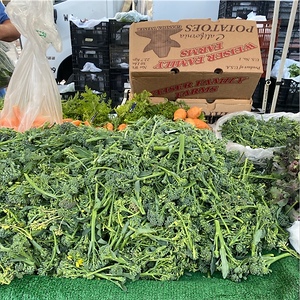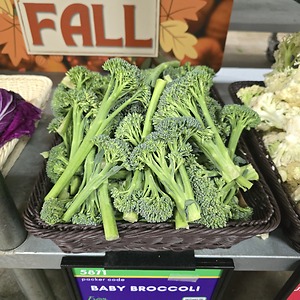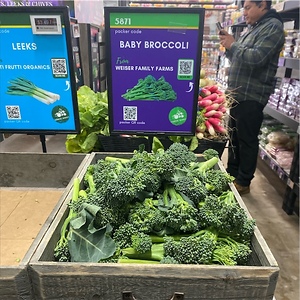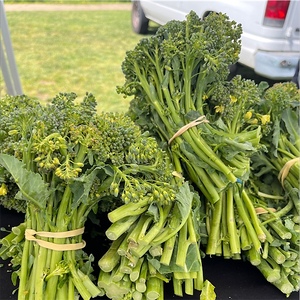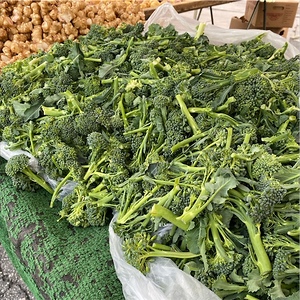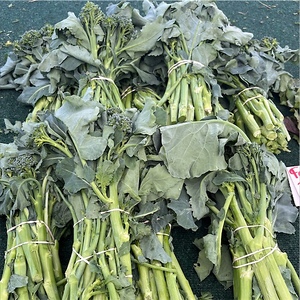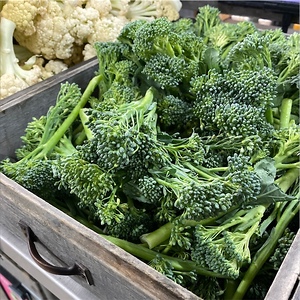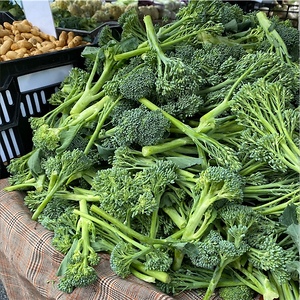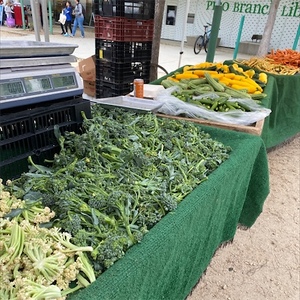

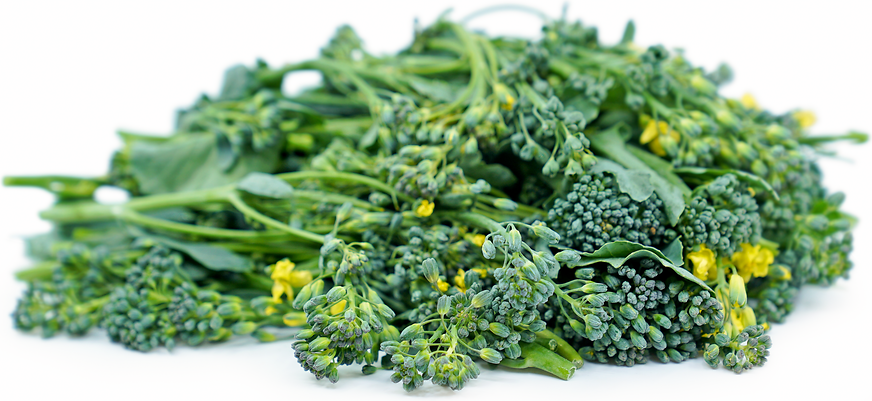
Baby Broccoli
Estimated Inventory, lb : 0
Description/Taste
Baby broccoli is a green vegetable with a smaller central head and longer stalks than traditional broccoli. These slender green stalks measure about 5 to 9 centimeters long and have a firm texture and matte appearance. They are topped with green florets that may display a faint blue tint or have small yellow flowers nestled within. These florets have a bumpy, rough, and crunchy texture while the stalks are more chewy. Baby broccoli becomes tender when cooked and has a mildly sweet flavor with subtle bitter undertones. The entire plant is edible.
Seasons/Availability
Baby broccoli is available year-round.
Current Facts
Baby broccoli is botanically classified as Brassica rapa and belongs to the Brassicaceae family along with kale, cauliflower, Brussels sprouts, and cabbage. Baby broccoli is frequently confused for broccolini but the two are different cultivars. Broccolini is a hybrid cross between broccoli and a Chinese vegetable known as Gai Lan that has a more bitter flavor. Baby broccoli is harvested by cutting the florets from the plant’s main central stalk. After this initial harvest the plant continues to produce new side shoots from the main stem. These regrowing side shoots allow for multiple harvests from the same plant without the need for replanting. Baby broccoli is primarily cultivated for culinary purposes and is often cooked alongside other roasted vegetables.
Nutritional Value
Baby broccoli is high in vitamin C, a powerful antioxidant that supports immune health, helps repair tissues, and promotes healthy skin by aiding in collagen synthesis. The vitamin A in Baby broccoli is vital for maintaining good vision, immune function, and skin health. Calcium is another important component that helps build and maintain strong bones and teeth while also supporting proper muscle function. The vitamin E content in this vegetable contributes to skin health and protects cells from oxidative damage. Folate in Baby broccoli is essential for DNA synthesis and cell growth, making it particularly important during pregnancy for healthy fetal development. The iron sourced from this variety supports oxygen transport throughout the body, preventing anemia and boosting energy levels, while its potassium plays a crucial role in maintaining healthy blood pressure, nerve function, and muscle contractions.
Applications
Baby broccoli may be consumed raw, sautéed, steamed, roasted, grilled, or fried. The stalks and florets are more tender than traditional broccoli and also cooks faster. Raw Baby broccoli is often used for charcuterie boards, dipped in ranch and hummus, or chopped into salads. It may be grilled alongside other vegetables like asparagus, zucchini, bell peppers, eggplant, mushrooms, and sweet potatoes. Baby broccoli can be tossed into stir-fries, pasta, risotto, rice bowls, and omelets or puréed for soups, sauces, and dips. It also works well as a topping for pizza and flatbreads. This vegetable is complemented by the flavors of garlic, onions, dried chiles, lemon, limes, light-bodied vinegars, tomatoes, potatoes, cured meats like bacon and pancetta, soy sauce, olives, sesame seeds, pine nuts, chickpeas, white fish, and cheeses such as parmesan, cheddar, feta, and goat cheese. Baby broccoli can be stored in the refrigerator for up to a week.
Ethnic/Cultural Info
The United States is one of the largest exporters of broccoli in the world but it took a while for the vegetable to gain popularity there. Broccoli was first planted in the country by Thomas Jefferson who sowed them at his Monticello estate in Charlottesville, Virginia. The vegetable was brought into the country at a larger volume by Italian immigrants who started planting it in New York gardens. The vegetable’s association with these immigrants caused resistance due to cultural biases towards Italians at the time. Marketing campaigns were released during the 1940s to raise broccoli's reputation but were made null due to the post-World War II push towards the convenience of canned vegetables. Broccoli finally started to gain niche appeal when it was embraced by health-conscious vegetarian communities in the 1960s. Its reputation slowly improved over the latter half of the 20th century and early 21st century alongside the introduction of new novelty varieties like Baby broccoli.
Geography/History
Baby broccoli was likely introduced in the late 20th or early 21st century but its origins are not widely known. This vegetable is a descendant of the broccoli species that originated with the Etruscans in the Roman Empire. Baby broccoli grows in mild climates with full sun exposure and moist soils. This vegetable is a domesticated variety that's produced commercially and in home gardens. Baby broccoli has gained popularity along with other niche broccoli varietals like Broccolini, Broccoli Raab, Romanesco broccoli, and Purple broccoli. Their distinctive appearances, flavors, and culinary uses appeal to chefs and home cooks interested in diversifying their vegetable choices. Baby broccoli is commonplace in Italy and can be found at farmers' markets and specialty grocers in the United Kingdom, New Zealand, Europe, and the United States. It can also be purchased to grow from seeds in home gardens.
Recipe Ideas
Recipes that include Baby Broccoli. One



